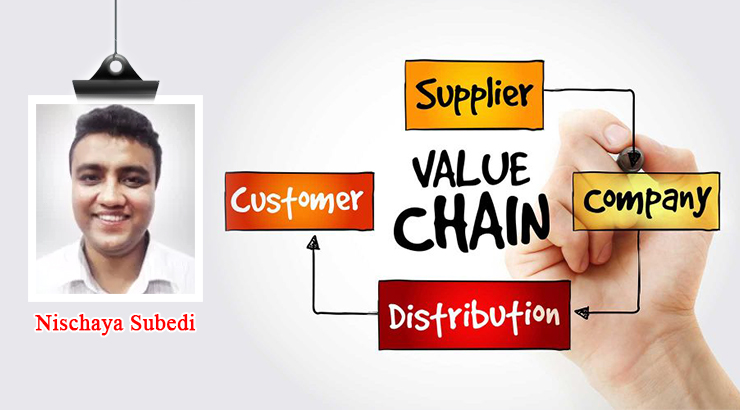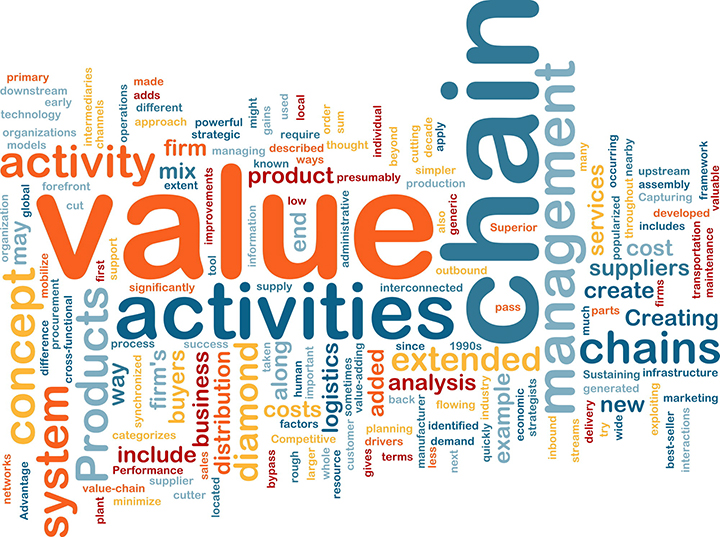
14 October 2018, Kathmandu
In a “remote” village on the outskirts of this Kathmandu Valley near the edges of hills, I saw it firsthand a striking example of how application of value chain can change the life of a retailer in general and a cow milk dealer to be precise.
I have been reading the concept of value chain as proposed by the famous Harvard professor Michael Porter since last 14 years, right from my engineering days and also during my MBA. But here was an example which made me understand the concept entirely by seeing how a cow milk dealer made it work to his advantage.
This milk dealer has been selling raw unpasteurized cow milk for the last 14 years which exactly the same number of years that I have understood the concept of value chain. There are many other cow milk dealers around the market, at least three that I have noticed. One of the dealers is just 50 meters away from my home. But I am a fanatic for milk from one particular dealer to get his superb value added cow milk. He is located four kilometers away and I don’t mind commuting daily to his place to fetch milk from him.
The idea must sound crazy to you, but even crazier is the fact that the Pashupatinath Temple which is at least twenty kilometers away from this supplier is also getting the daily dose of twenty liters milk from him.
It must be stumping you by now. Cow milk or rather any milk is a very common commodity found in Nepalese market. It can be found in many forms such as in packets as pasteurized milk. There are at least 20 brands available in Kathmandu Valley. And there are a large number of raw milk dealers in the city. Then a natural question arises: how does the milk sold by a particular dealer become a number one choice with a customer like me and also the Pashupatinath temples revered so highly by Hindus.

I observed a few things. First and foremost, the milk dealer follows this philosophy: “Strengthen the customer and you will be strengthened”. Second, he has kept an instrument called hydrometer, which measures whether the milk sold to him by the farmers around his village contains just milk or milk added with water. If some water mix is detected, he returns back their milk. Thus the quality of milk is guaranteed. Third, when I or any other customer asks for a liter or even one and half liters of milk, he pours at least 100 to 200 ml additional milk than demanded for no extra price.
What have these habits he placed on his business etiquette resulted in? Yes that’s right, they have added value back to the customer who understands fully that he can be trusted. He is adding value by keeping a customer centered philosophy, supplying pure unadulterated milk and giving a little more in quantity than his competitors for the same price.
Thus the fourteen years of his hard work has earned him reputation due to added value. So much so that a person like me, who has an analytical mind, calculated the costs and benefits and started to buy from him because he created value for me. The same must be the case with the temple. He has succeeded in creating value for all his customers.
How could this story be an advantageous lesson to any retailers on exploiting value chain for profitability and customer retention?
Just ask yourself how can you add value to your product or your showrooms for your customers’ sake.
If a milk seller can do this with a non differentiated milk market this way, the opportunity for each retailer which already has a differentiated product is limitless. This is your time to do this. Take note of this and think how to add value. It’s your business.
It is not me who can tell you about your retail business. It is you because you are the one who has toiled and also succeeded or failed in the process. All you need do is to exploit this value chain properly.
(Nischaya Subedi is a Consultant Strategic Manager based in Kathmandu.)










